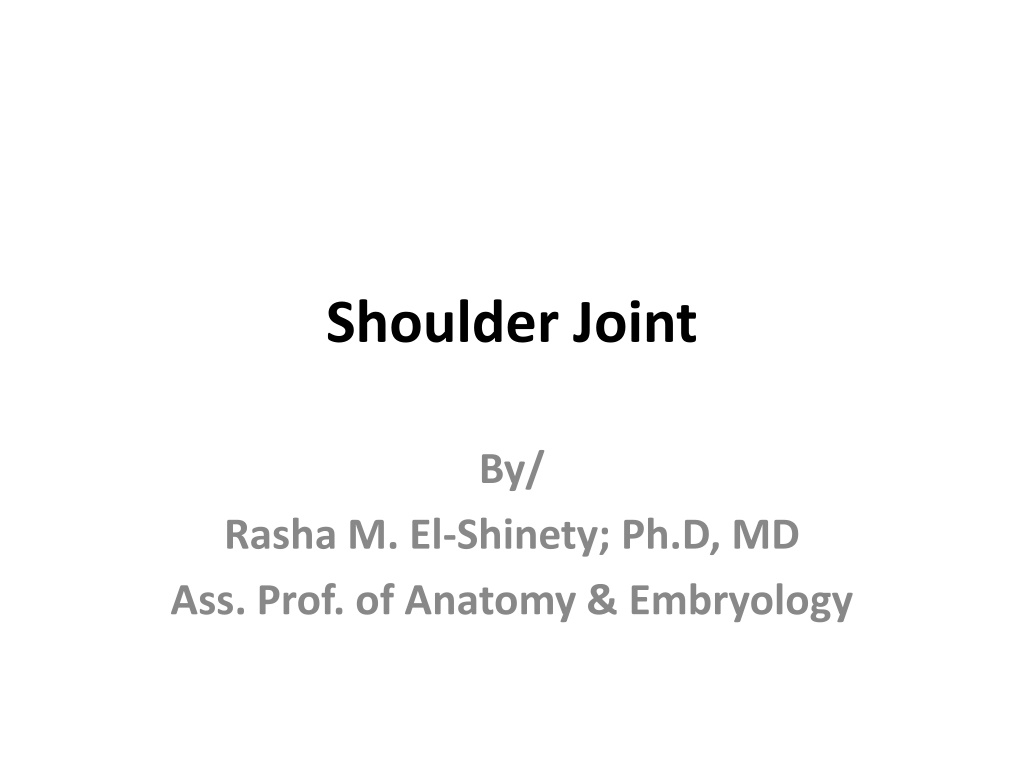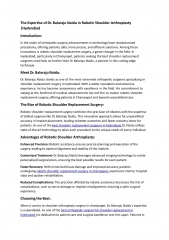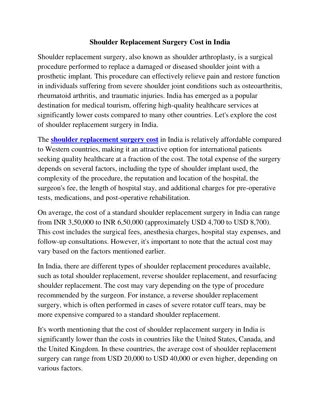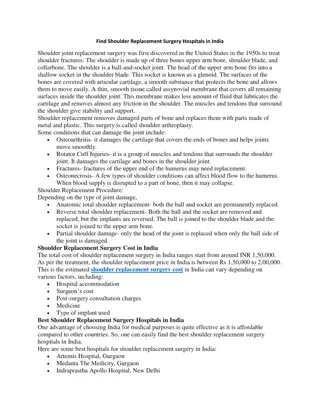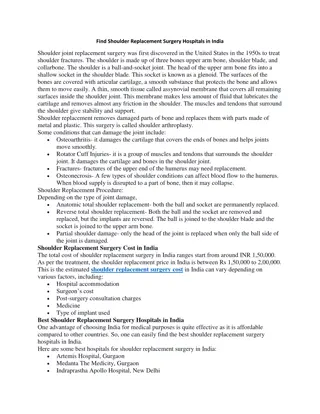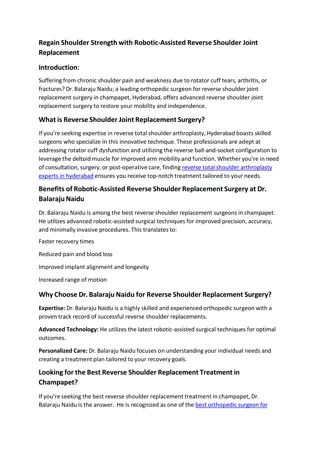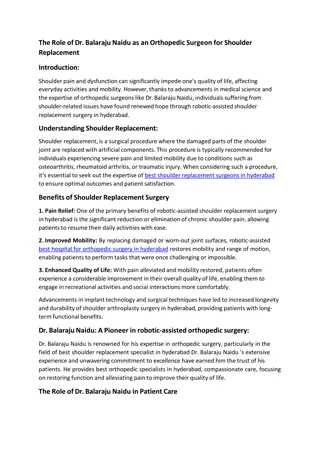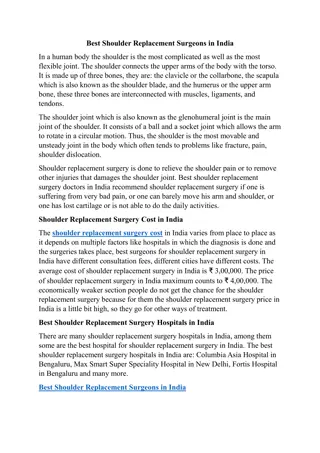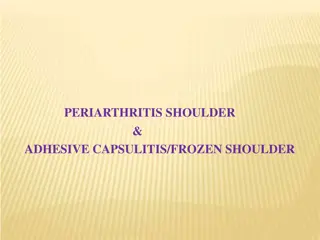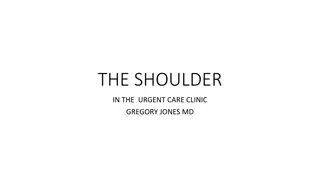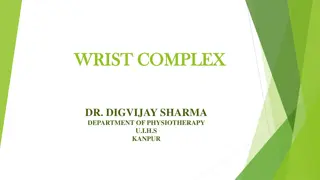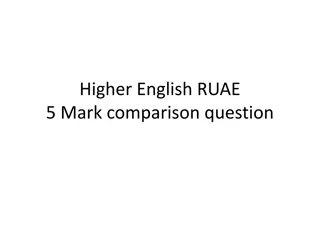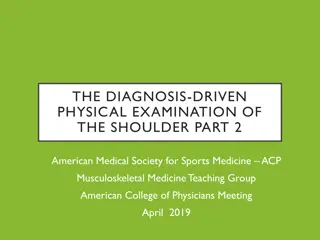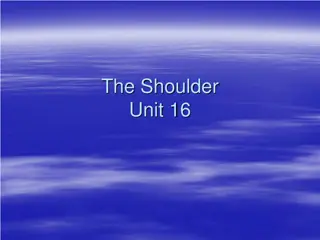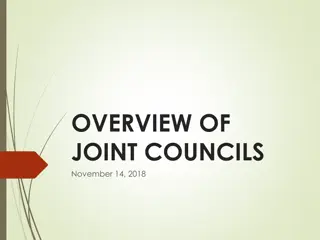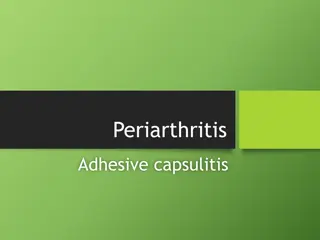Shoulder Joint
Understanding the shoulder joint, a synovial polyaxial ball-and-socket joint, with articular surfaces, capsule details, ligaments, and movements involved. Explore the complexities of this crucial joint in the human body.
Download Presentation

Please find below an Image/Link to download the presentation.
The content on the website is provided AS IS for your information and personal use only. It may not be sold, licensed, or shared on other websites without obtaining consent from the author.If you encounter any issues during the download, it is possible that the publisher has removed the file from their server.
You are allowed to download the files provided on this website for personal or commercial use, subject to the condition that they are used lawfully. All files are the property of their respective owners.
The content on the website is provided AS IS for your information and personal use only. It may not be sold, licensed, or shared on other websites without obtaining consent from the author.
E N D
Presentation Transcript
Shoulder Joint By/ Rasha M. El-Shinety; Ph.D, MD Ass. Prof. of Anatomy & Embryology
SHOULDER JOINT Type of joint: Synovial. Polyaxial. Ball and socket.
SHOULDER JOINT Articular surfaces: 1. Head of humerus. 2. Glenoid cavity of scapula. Each of the articular surfaces is covered by hyaline cartilage. The glenoid cavity is deepened by a fibro-cartilagi nous rim; labrum glenoidale.
SHOULDER JOINT Capsule: The capsule is attached to the margins of the glenoid c avity outside the labrum glenoidale. Laterally the capsule is attached to the anatomical neck of the humerus, except inferiorly where it extends abo ut 1 cm to the shaft. N.B the supraglenoid tubercle is inside the capsule so t he tendon of long head of biceps is an intra-capsular ex tra-synovial structure. Thickenings of the capsule (false ligaments of the joint): The capsule is thickened by 3 glenohumeral ligaments.
SHOULDER JOINT Synovial membrane It lines all the structures inside the capsule of t he shoulder joint EXCEPT the articular cartilag e It forms a tubular sheath around the tendon o f long head of biceps so it is an intra-capsular, extra-synovial strucure.
SHOULDER JOINT LIGAMENTS RELATED TO SHOULDER JOINT 1- False ligaments: They are the thickening of the capsule of the shoulder joint (glenohumeral ligaments). 2- True ligaments: Coraco-humeral ligament. Transverse humeral ligament (bridges over the b icepetal groove).
SHOULDER JOINT Movements of shoulder joint Flexion: This movement is done by the clavicular head of pictoralis major, anterior fibers of the del toid and the coracobrachialis. Extension: This movement is done by the posterio r fibers of the deltoid and teres major. Adduction: This movement is done by the pectora lis major, teres major and latissimusdorsi. Abduction: This movement is done by the supras pinatus and deltoid.
SHOULDER JOINT Movements of shoulder joint Medial rotation: This movement is done by the p ectoralis major, teres major, latissimusdorsi, subsc apularis and anterior fibers of the deltoid. Lateral rotation: This movement is done by the inf raspinatus, teres minor and posterior fibers of the deltoid. Circumduction; a movement of abduction, extension, adduction and flexion in succession.
SHOULDER JOINT Nerve supply of shoulder joint: 1. Suprascapular 2. Axillary 3. Musculocutaneous
SHOULDER JOINT Factors share in stability of shoulder joint: The stability of any joint is an action of 3 factors: Bony factor Ligamentous factor Muscular factor 1- Bony factor The shallow glenoid cavity opposite to a relatively larger head is a negative factor in stability of this joint. However the labru m glenoidale deepens the shallow glenoid cavity so it helps in stability of the joint. Coraco-acromial arch, acts as a second socket for the head of humerus and prevents its upward dislocation.
SHOULDER JOINT 2- Ligamentous factor Labrum glenoidale. Coraco-acromial ligament as bridges over the bony arch. 3. Muscular factor It is the main factor aiding to stability of the joint. Rotator cuff of muscles (they are the 4 muscles that firmly a dherent to the capsule of shoulder joint; subscapularis, sup raspinatus, infraspinatus and teres minor. Splinting effect of long heads of biceps and triceps muscles. Long head of biceps prevents upwards dislocation of the joi nt.
